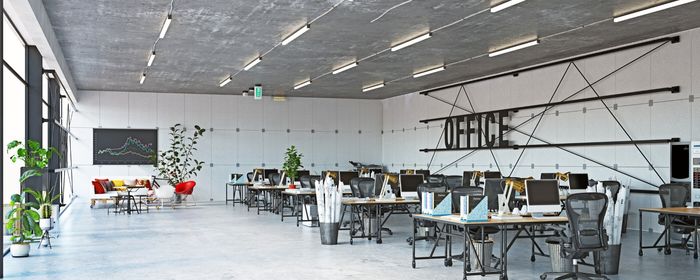“Well, back to the salt mines.” You’ve probably heard a colleague mutter this expression when reluctantly going back to work. So it wouldn’t be surprising to hear someone returning from the pandemic to say something like “Back to the Corona cruise.”
The fear of returning to an office full of invisible, potential contaminents is palpable. Fortunately, companies can do a lot to mitigate those concerns to reopen offices. Key actions include cleaning frequently and emphasizing hygiene, creating protocols and physical spacing to enforce and encourage social distancing, supplying appropriate personal protective equipment, and implementing a reliable health monitoring system. And since some staff will likely remain working at home, organizations should prioritize remote workers’ ergonomic health and their cybersecurity awareness.
Employer Duty of Care
Organizations owe a duty of care—a moral, legal, and ethical obligation—to see to the health, safety, and security of their employees. With regulations and laws issued by the Occupational Safety and Health Administration, state health and safety agencies, and a patchwork of other regulatory and legislative bodies, that duty becomes more complicated and nuanced in the age of COVID-19. However, the Americans with Disabilities Act continues to apply. At a minimum, employers must consider cleaning and hygiene, social distancing, personal protective equipment, physical and mental health monitoring, and work-at-home ergonomics.
But businesses also owe duties to customers and shareholders. That’s why companies must also establish and enforce data privacy, information protection, and cybersecurity protocols.
Cleaning and Hygiene
As employees trickle back into the office, make the company’s attention to hygiene obvious. This includes setting up plentiful sanitation stations stocked with gel and wipes, regularly cleaning high-touch surfaces such as door handles and copy machine keys, and posting signs encouraging frequent hand washing. Asking staff to watch a hygiene training and awareness video or participate in an interactive training module will serve the dual purpose of encouraging washing and expressing concern.
Social Distancing
Gone are the days of packing staff into open workspaces. Social distancing will likely require a combination of establishing certain work-at-home-only staff, staggering shifts, erecting plastic barriers, reengineering office space, and reducing elevator occupancy. Marking floors with tape to create one-way traffic flows, as well as creating up-only and down-only stairways, may also be a good option. But be wary of deploying social distancing “ambassadors,” such as security officers, to maintain distance. While they might be effective, consider whether it is an efficient use of staff resources. Ambassadors may also be at heightened risk of getting ill.
PPE
Depending on spacing, barrier placement, air flow, and the activities occurring in an office area, employers should consider encouraging or requiring mask use and supplying staff with sufficient masks. If masks are required, the type (if any) should be specified, and the mandate must be enforced or it will engender noncompliance and division among staff. A mainstay in the healthcare environment, plastic face shields are becoming both an addition and alternative to facemasks in various other settings. Some research shows that face shields protect against Coronavirus more effectively than masks do. Disposable gloves are another PPE option, but beyond use for cleaning, gloves may provide more false confidence than actual value.
Health Monitoring
An emerging best practice is to ask employees to take their own temperature and check themselves for symptoms every day, then use a COVID and temperature check app to record their responses to qualifying health questions. Many companies also take temperatures and verify arriving employees’ responses at the door. Anyone who exceeds 100.4 F proceeds to a second check. Employers should examine local regulations regarding who can take temperatures. They should also have protocols in place for ensuring personal privacy for anyone presenting as ill, avoiding congregations at waiting areas, and using or storing health data (which may be prohibited or regulated).
Organizations need to be wary of staff emotional well-being during this time of heightened uncertainty and stress. Employees may be caring for elderly or immunocompromised relatives, have lost a source of income, or suffering from marital problems, for example. Businesses should promote the use of employee assistance programs and be ready to accommodate pressing requests, such as allowing an employee who fears being cooped up with an unstable adult son to come into an otherwise empty company office.
Work at Home Ergonomics
Many staff have jury-rigged workspaces at home that don’t consider long-term health effects on the body. Employers should consider assigning a qualified staff member to advise staff on ergonomics. Alternatively, they can contract with an expert or, at bare minimum, offer staff access to online resources. Ergonomics should cover desk height and placement, monitor settings and placement, keyboard placement and tilt, mouse type, chair type and height, etc.
Information Security
When the Coronavirus pandemic hit, many organizations quickly issued staff new or mothballed laptops. These often were poorly configured and insecure, and employees lacked clear security protocols to follow. With families sharing the same computer components, sensitive business information may be commingling with children’s school essays and shopping lists. Data is the lifeblood of a company, often constituting most of a company’s value. Customer data is not only valuable, but it also carries double importance: loss or compromise of customer information exposes companies to enormous liability, remediation costs, and reputational damage. So personnel must understand why and how company data should be protected—and be held accountable for doing so. But they can’t be accountable absent clear guidance, properly configured hardware, and regularly updated and patched software, all the responsibility of the IT or security department.
Navigating Into Safe Harbor
It will take time for workers to adapt to the new COVID-era workplace environment. Respect, empathy, communication, and new workplace routines for health and hygiene will go a long way to bringing a happy and productive staff back on board. Workers may never consider a return to the office as pleasure cruise, but at least it can serve as a safe harbor.




